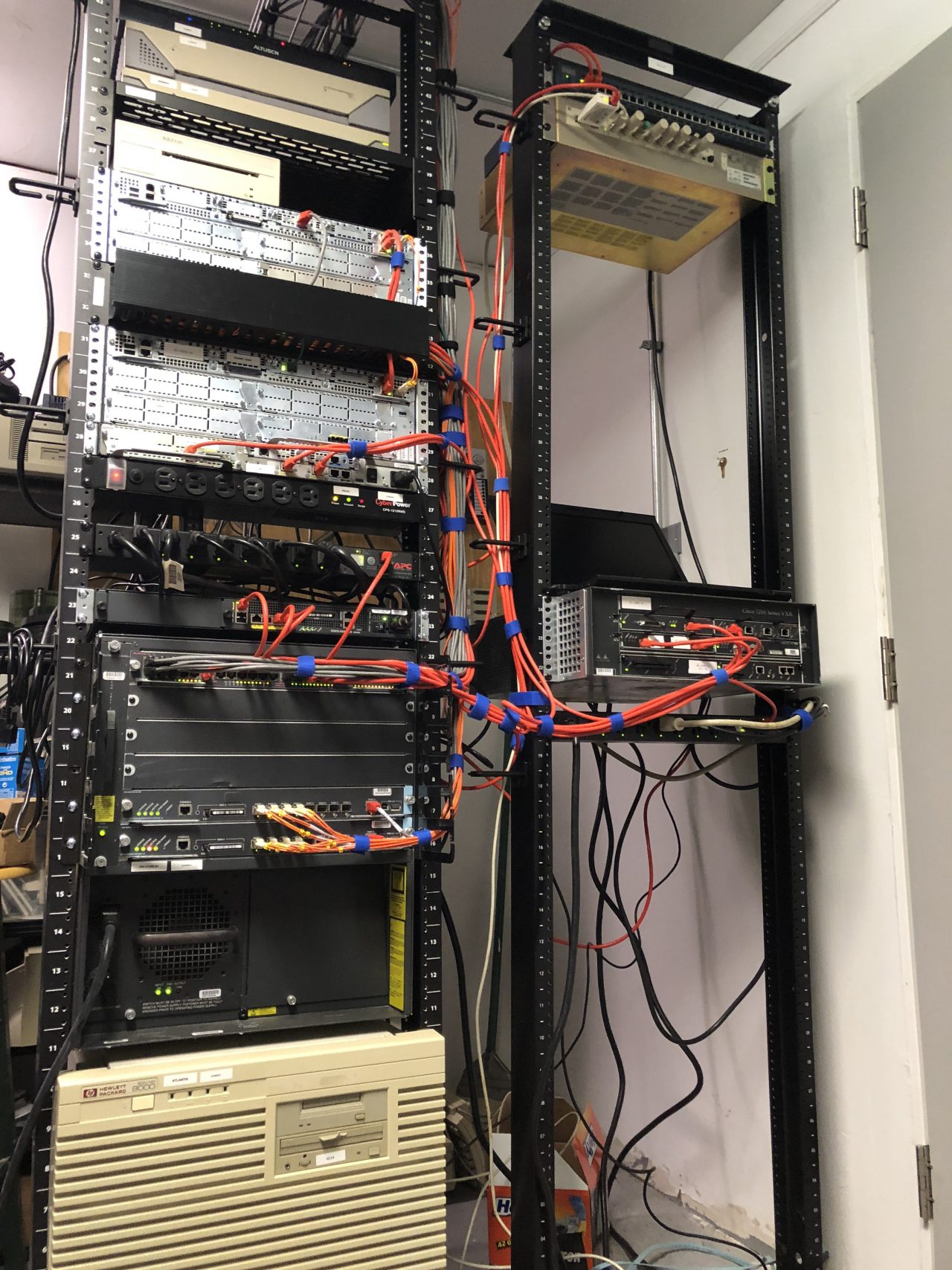
Network Racks
In the datashed network, a Cisco 7204VXR serves as the core router:

Core Router
The core router, rt-core-01, mediates access from the network edge (rt-edge-01, rt-edge-02, and rt-chivanet-01) into the core switch. It also provides a bridge to the Token Ring network segment. This crucial router is not only routing IP, but also IPX, DECnet, and AppleTalk.
The network edge is routed by two Cisco 3845 routers, rt-edge-01 and rt-edge-02, and a Cisco 2611, rt-chivanet-01:

Edge Routers (rt-edge-01, rt-edge-02)
The T1 line (from GTT Communications) lands on rt-edge-01, and the ADSL line (from ZiaNet) lands on rt-edge-02. ChivaNet provides Wi-Fi service to low-income families in my neighborhood, mediated by rt-chivanet-01.
The core switch (sw-core-01) is a Cisco Catalyst 6506 running IOS (no CatOS nonsense here), which handles all inter-VLAN routing chores. DECnet, AppleTalk, and IPX are also present:
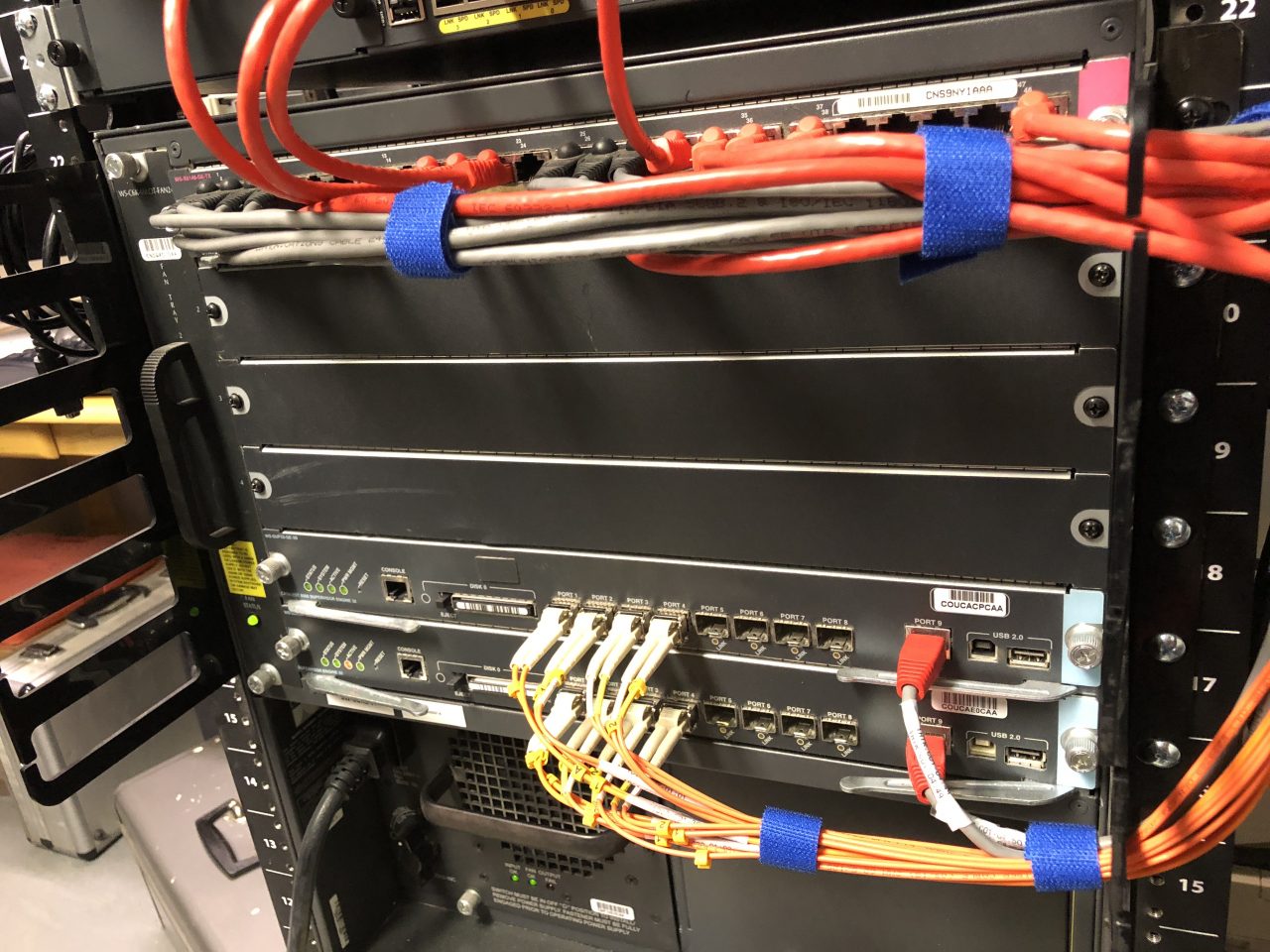
Core Switch (sw-core-01)
The C6506 has a pair of Sup32 supervisor blades and a 6148 gigabit Ethernet line card. The fiber ports on the sup blades go off to top-of-rack switches in the server racks, while the copper ports (port 9 on each of the supervisor blades) go off to the switch in the IDF in the main house. The Sup32 blades are running in SSO redundancy mode, so that if one supervisor fails, the other can take over. However, in this mode, all members of the LACP bonds are always active, even on the standby supervisor, as they form port-channels to the switches to which they are connected.
External VPN access into the network is provided by a Cisco ASA 5520. Above the ASA 5520 is an APC smart PDU:

APC Smart PDU, Cisco ASA 5520
The top-of-rack switches are either Foundry FastIron Edge x448 and Foundry FastIron 4802s, each connected to the core switch with fiber optic cables:
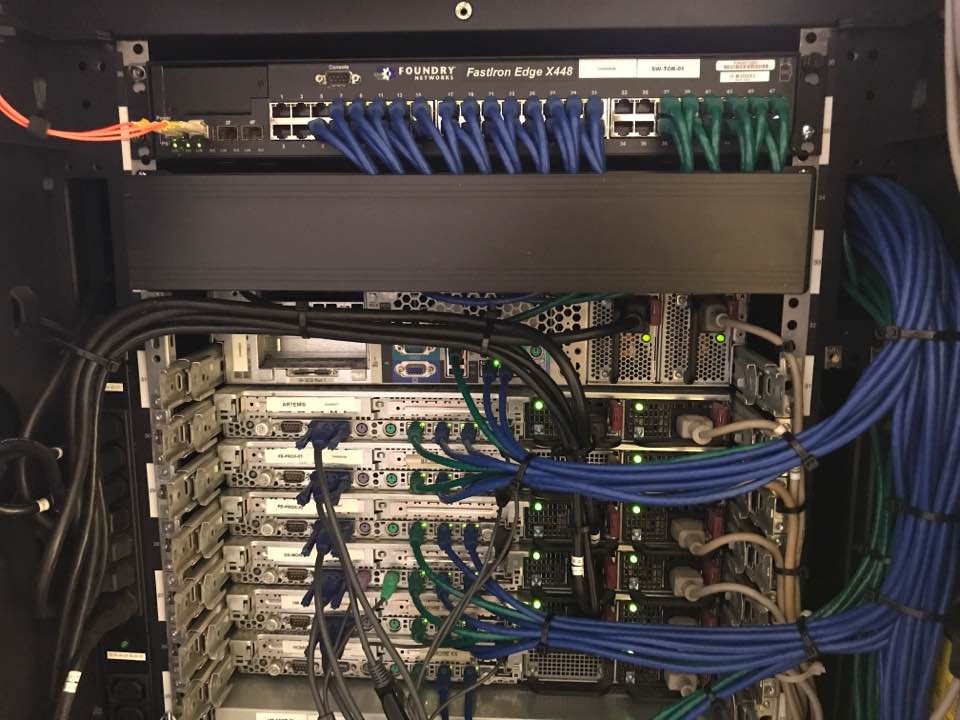
As raised floors were out of the question for this build-out, I used hanging cable trays instead. I had to meet the semi that carried these cable trays in the parking lot of a local home improvement store (note that the racks look nothing like the below photos anymore, and the cable trays are much more full):


A little detail of the top of the networking rack, showing a couple of SPARCstations, a VAXstation, and the Altusen 32-port KVM switch:

Here, you can see the Cisco Catalyst 3920 Token Ring switch and the DEC Thinnet Concentrator:
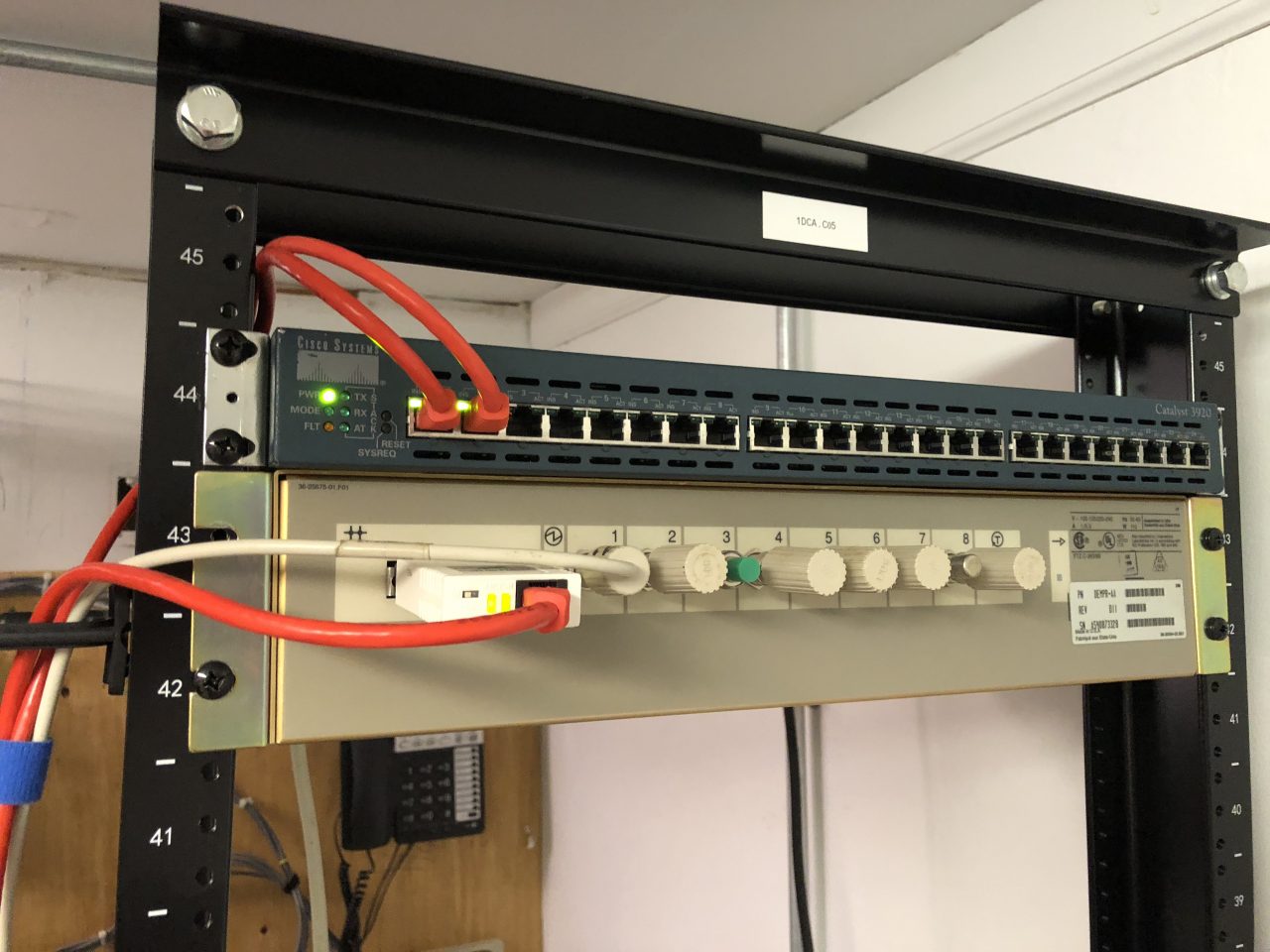
Token Ring Switch/Thinnet Concentrator
The ThinNet concentrator currently serves only to bridge the HP9000 server’s Ethernet connection onto the rest of the network. Token Ring is currently only in use by my Novell NetWare 4.11 server, although there will soon be some more equipment on this segment, once I get the benchwork built along the south wall of the building. Turns out–unsurprisingly–that OS/2 Warp Connect plays very, very well in a Token Ring environment.
Here is one of the machines that will be added to the Token Ring segment:
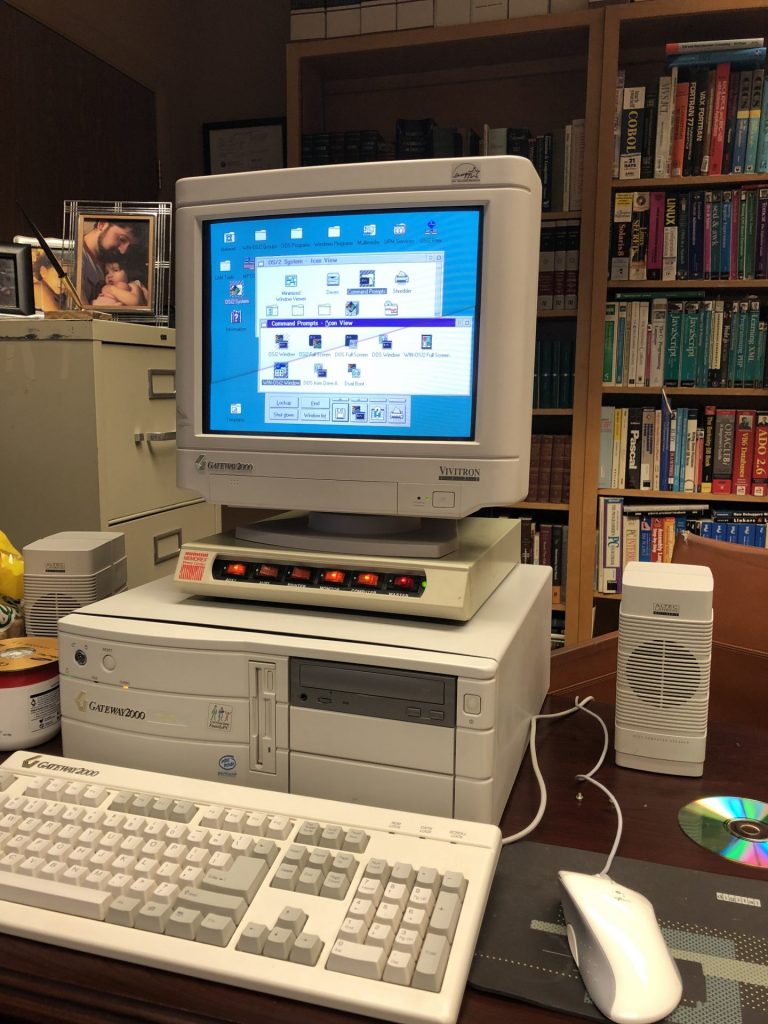
Here is a diagram of the network core (excluding the ChivaNet infrastructure):
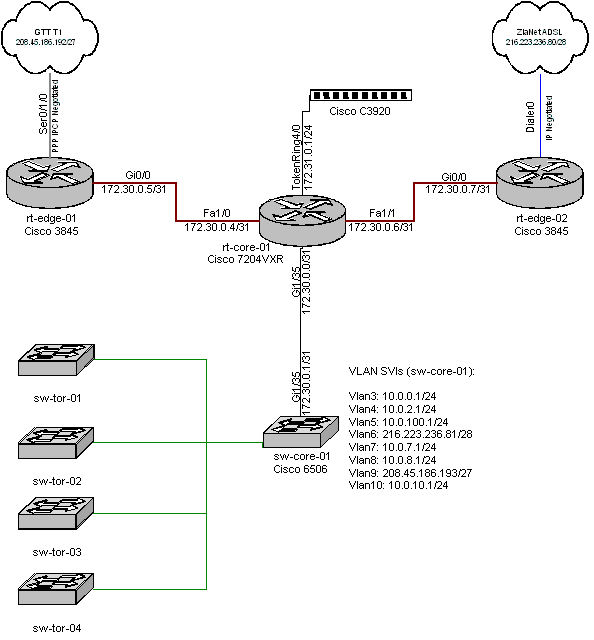
Datashed Network Diagram
The SPARCserver 20 and SPARCstation 20, below, provide web, mail, and other services for ChivaNet users:
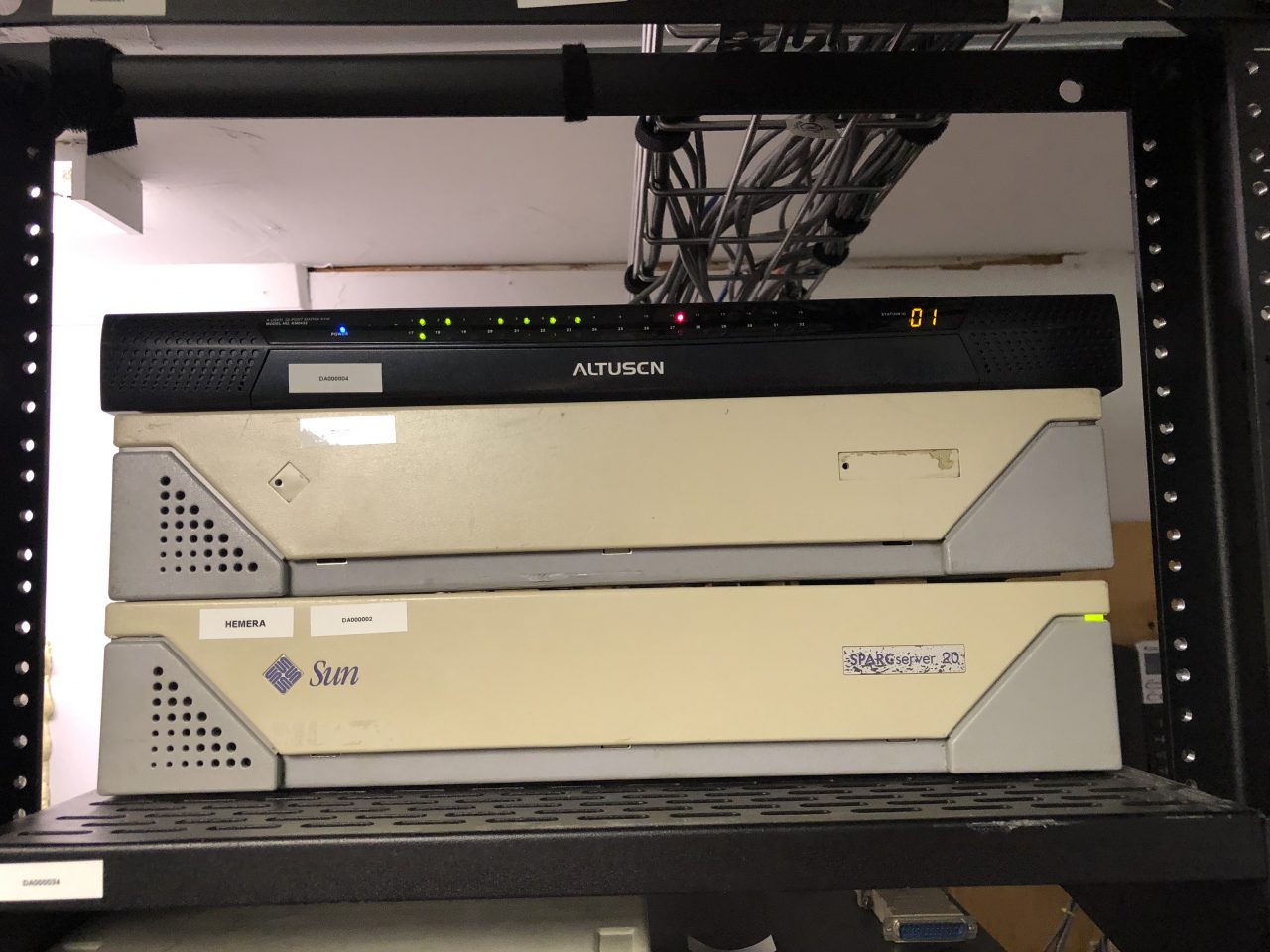
Sun SPARCserver 20s/Altusen 32-port KVM
The Altusen 32-port KVM provides console access to servers in the other racks.
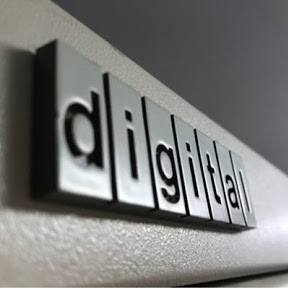
Recent Comments